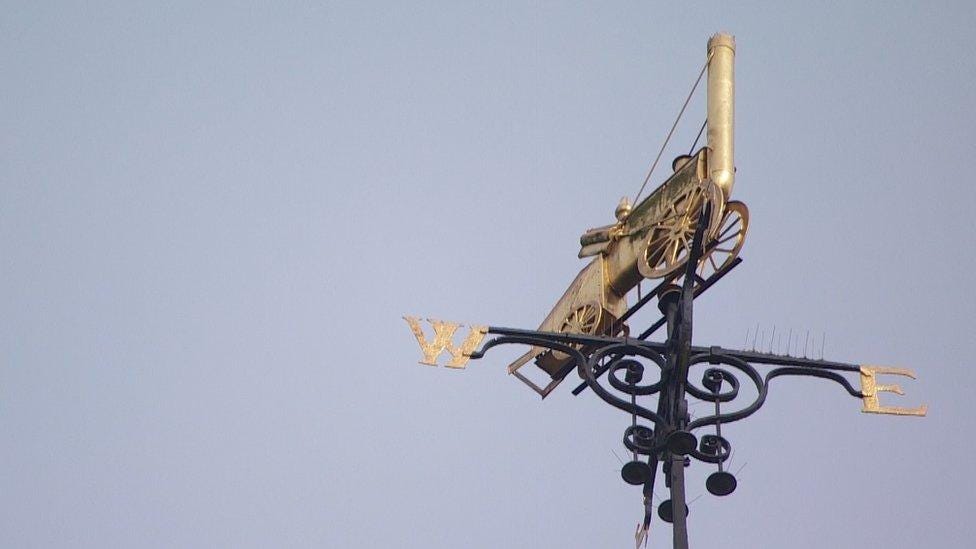This weekend I was commissioned to write a short piece about HS2, and the rather grim state of Britain’s railways – and of the country more generally. Regular readers will know that i have a fondness for trains; you’ll probably know why, too: a product of my family and upbringing in Crewe.
I’ve written about Crewe a bunch before, and when the piece comes out you’ll get bits of it there as well, so i won’t rehearse too much of that material. Suffice to say that the town was once one of Britain’s, if not the world’s, great railway towns. The current state of it shows something of the country’s present sad state of affairs.
Anyway, for the piece I have been revisiting the writing of Ian Jack. Jack was, in my estimation, one of Britain’s great writers and journalists. More than that, he was a wonderful essayist. There have been three collections of his writings published so far: Before the Oil Ran Out, containing pieces drawn mainly from his work for the Sunday Times, and still one of the most subtle and evocative books on Britain of the late 1970s and early 1980s there is; The Country Formerly Known as Great Britain, which includes most of the longer essays he wrote while editor of Granta between 1995 and 2007 (before the mag’s slip in later years), and which contains some of my favourite writing of his; and Mofussil Junction, a collection of his decades-long writing on India, and a book seemingly impossible to source (if anyone can help, let me know!). I urge anyone to buy these volumes to see what journalism can and perhaps should be. I hope there will be another which collects his writing beyond 2000 – pieces like this superb essay on Britain’s nuclear deterrent, Trident, from 2016.
Perhaps the quality i appreciate most in Jack’s writing is his gift for weaving together the the past and the present. Following the Hatfield rail crash in 2000, in which four people died after a train derailed just north of London, he wrote one of my favourite essays, “The 12.10 To Leeds”, for Granta. Rather than immediately pursue those responsible for the crash, rooted as it was in the rotten state of Britain’s railways after its botched privatisation in 1993, he approaches the issues crabwise. The essay begins with a wonderful description of Howe Dell, “a small wooded valley with a stream and a pond at the bottom”, and the site of the curved line from which the train derailed. “This is an ancient place”, Jack wrote, and on he goes to describe its rich, ancient history. Later, a long section is taken up with describing the evolution of the “permanent way”, the assemblage of rails, sleepers and ballast that makes up a rail track. Again, crabwise. The section begins:
When I was five or six years old, my elder brother took me for a walk one day down the hill through the cotton factories—this was Lancashire—to the place where a railway broke free of its tunnel. We scrambled down the embankment. My brother placed a penny on the line. Soon enough a train came past. Afterwards, smoke and steam hung lazily in the tunnel mouth. As the throb of the train receded into the distance, we stepped forward again and retrieved a wider, thinner penny with the head of King George VI flattened and disfigured by the pressure of many tons. (This may have been an offence against the realm as well as the trespass laws; it certainly caused a row when we got home.)
None of which is to say that, for all his somewhat elegiac description of railways past, he doesn’t name the guilty parties. He does. In fact, the accusations feel all the sharper for the historical weight of pages before.
I wrote to Jack once, sending him something i wrote about trains, a recurring theme in Jack’s work. It took me a good few years to do so. I was nervous about what such a balanced, thoughtful prose stylist would make of my amateur scribblings. In response he sent me an almost immediate, and very generous, response, which seemed characteristically him:
My older brother is a great expert on the London and North Western Railway, which had Crewe as its headquarters, and in the 1960s I stayed in the town with him for a couple of days. I remember that the town hall (or maybe the market hall) had an old weathercock cut in the shape of Stephenson’s Rocket. I hope it’s still there!
It was, and is, still there.
He died only a few months later.





